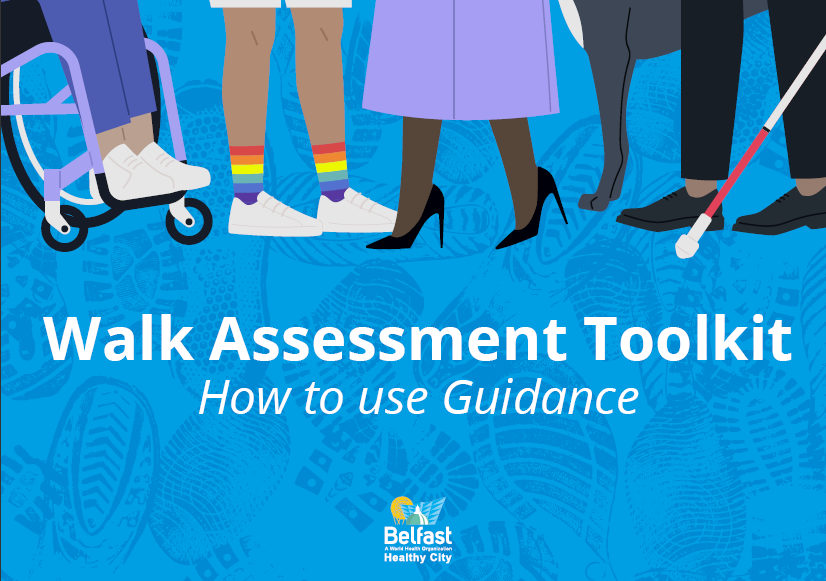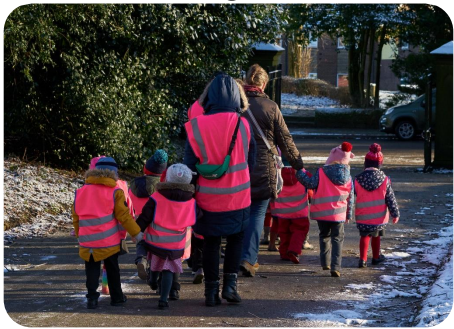Walkability
Walkability
A healthy city is a city that promotes connectedness, where people of all ages feel safe, have easy access to services, open and green space and that enables active engagement in society for all its citizens. Communities designed with people at the centre contribute to health and equity as well as the environment and the economy. Accessible public spaces encourage people to spend time outdoors in their communities and build social networks, which is a key prerequisite for active travel. Neighbourhoods that support walking and encourage social interaction also support local business and can encourage investment as well as contribute to property values. Walkable neighbourhoods create supportive and healthy places for people of all ages to work, live and play.
The Walkability Assessment for Healthy Ageing (WAHA) tool was developed by Belfast Healthy Cities and was inspired by World Health Organization (WHO) Checklist of essential features for age-friendly cities. It has been piloted with over 200 older people, including people in supported housing with early stage dementia, community based walking groups and seniors fora.
The Community Active Travel initiative, is a three-year project aimed at encouraging communities in Belfast to travel more actively, both for transport and leisure purposes. The project is funded by the Public Health Agency and delivered in partnership with Sustrans. Walkability assessments of twelve communities across Belfast were conducted to provide a baseline insight into the community’s perceptions regarding walking and walkability in the local neighbourhood. Its intended outcomes are to increase knowledge and evidence of the assets and challenges to walking in the participating communities and extrapolate the key issues that are relevant across the city so that walkability can be approved for all. The approach is also intended to give local residents an opportunity to share their views and ideas on their neighbourhood environment and inform consultations on local masterplan developments.
The findings from the walkability assessments are collated in reports and are ultimately intended to inform a set of recommendations to improve the walkability of neighbourhoods and to identify options and core partners for implementation of the formulated recommendations. The reports set out the key findings from a questionnaire and semi-structured group discussion and includes photographic evidence of the issues raised. They also provide recommendations for improving the walking environment in the assessed area. Reports of completed walkability assessments can be found here.
Walk Assessment Toolkit - How to use guidance
Walk Assessment Combined Results




